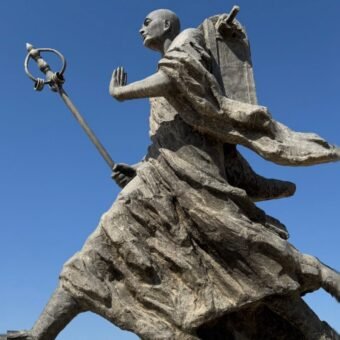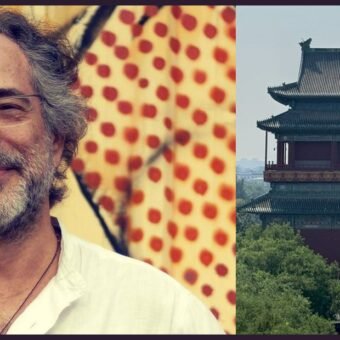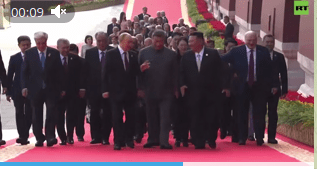In July 2025, the world got a glimpse of how differently China thinks about artificial intelligence. At the World Artificial Intelligence Conference (WAIC 2025) in Shanghai, Premier Li Qiang took the stage to propose a new global platform for AI governance: inclusive, cooperative, and open to the Global South. He didn’t talk about security threats or competitive advantage. He talked about sharing. AI, he said, should not be the privilege of a few nations or a handful of tech giants. It should be a public good, collectively managed and collectively owned. His speech didn’t aim to defend China’s position but to reframe the entire debate. While the West continues to treat AI as a threat to regulate or a race to win, China presented it as a global operating system to be co-designed. One that supports, rather than disrupts, the way nations build their futures. His words found cautious support in Europe and growing resonance in the Global South – not because China’s model was universally embraced, but because it offered an alternative. One where AI doesn’t belong to any one bloc but becomes a tool for global development. One where China is no longer reacting to the rules of the game but proposing new ones.
In the same month, on the other end of the ocean, geopolitics was in full swing. In Washington, President Trump unveiled a sweeping AI strategy under the banner “Winning the AI Race: America’s AI Action Plan”. The plan, rooted in his January executive order to remove barriers to U.S. leadership in AI, framed AI not as a shared global opportunity, but as a domain to dominate. With over 90 federal policy actions, the plan focused on accelerating innovation, fast-tracking AI infrastructure like data centers and fabs, and exporting full-stack U.S. AI technology to allies. “Winning the AI race is non-negotiable,” declared Secretary of State Marco Rubio. AI, the White House insisted, would usher in a new golden age of American prosperity and power – but only if the U.S. stayed in control. Far from seeking multilateral governance, Trump’s America was setting the rules – and expected the world to follow.
Therefore, in a surprising turn of events, the U.S. government granted Nvidia in July a license to resume its shipments to China of downgraded H20 AI chips. The move came shortly after China’s rare earth exports to the U.S. resumed and a U.S.-China trade agreement was in the works. Demand for AI computing power in China remained undeterred. Nvidia ordered an additional 300,000 chips from TSMC, and its CEO, Jensen Huang, praised China’s foundation models as “world-class” during a visit to Beijing. His remarks were widely reported in China as a validation that the AI future would not be written by the West alone. But only a few days later, Chinese authorities summoned Nvidia to address concerns about possible backdoors in its chips. In the same week, two Chinese were arrested in California for illegally shipping H100 chips to China. This summer, the AI landscape became more than a tech battleground – it turned into a geopolitical minefield.
This should not come as a surprise. In my upcoming book “China’s Next Miracle”, I describe how the classic triad “China copies, the U.S. innovates, Europe regulates” has become a caricature of the past. China is now one of the world’s most assertive regulators in digital affairs. From cybersecurity and personal data to generative AI, its legal frameworks are not only expanding rapidly, but becoming increasingly proactive. But the real shift isn’t in the number of new rules—it’s in the mindset behind them. While European regulation often seeks to preserve existing values, and American policy tries to protect innovation, Chinese regulation is strategic: it doesn’t look backward. It designs forward.
That logic is especially visible in the way China now handles intellectual property. For decades, Western companies viewed IP as a fortress: patent it, lock it in, and guard it. But China is moving fast from exclusivity to integration. Its IP system is shifting toward a more collective approach: open source, open data, shared patents, open APIs, and innovation commons. What matters is no longer who owns the invention, but how that invention gets embedded into a broader ecosystem. In a country where collective systems have structured society for more than two thousand years, this shift feels less radical than it seems. China is now going “back to the future”.
The result is not just a change in rules but a change in roles. Europe still defines itself by what it wants to protect. The United States by what it can disrupt. But China is increasingly defined by what it is willing to build—and how. It doesn’t treat AI as just a new consumer technology or just a buzzword for global prestige. It treats it as an industrial platform, embedded across sectors: logistics, healthcare, education, mobility, and public services. Its innovation model doesn’t chase single breakthroughs. It focuses on long-term consolidation. Where the West scales after success, China scales to achieve success. Where Silicon Valley disrupts (read breaks), Beijing builds. It may look slower – but it lays deeper roots.










Two things investors look for are time to market and monopoly. China’s play book captures these two value factors. Netscape was the best browser yet MS Explorer won the browser war until Google. China is leveraging its size and industrial might to capture the markets around the world. Microsoft used… Read more »
I found myself unable to accept the framing, Europe is now idealogically self constrained by blinkered midwits who’s singular talent is to always misdirect investment and demand compliance from the industry it has become accustomed to parasitise, the host is bleeding out. Trading in pig blood futures from a dead… Read more »
The lens you see through affects what you see, here a Chinese economist suggests a different take. https://www.youtube.com/watch?v=bKsZWAHFNYU
Confidence in a collective unfolding into a global paradigm of embracing unmeasured evolutionary potential. That feels very good to me. After the rain, a new world opening up into a new cosmos?